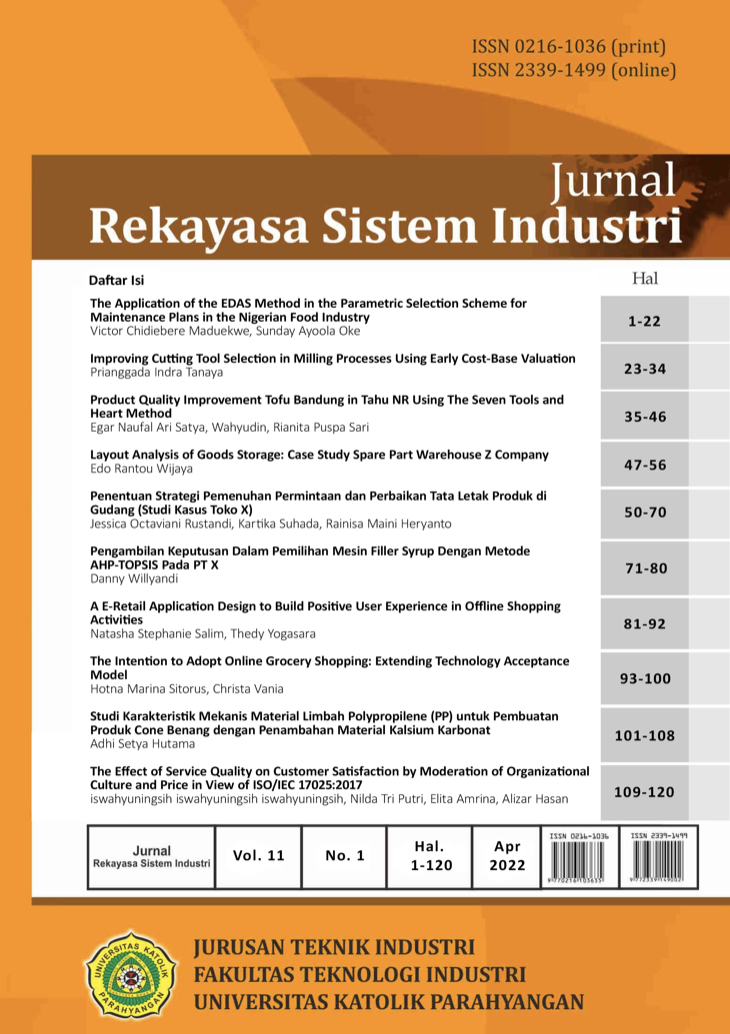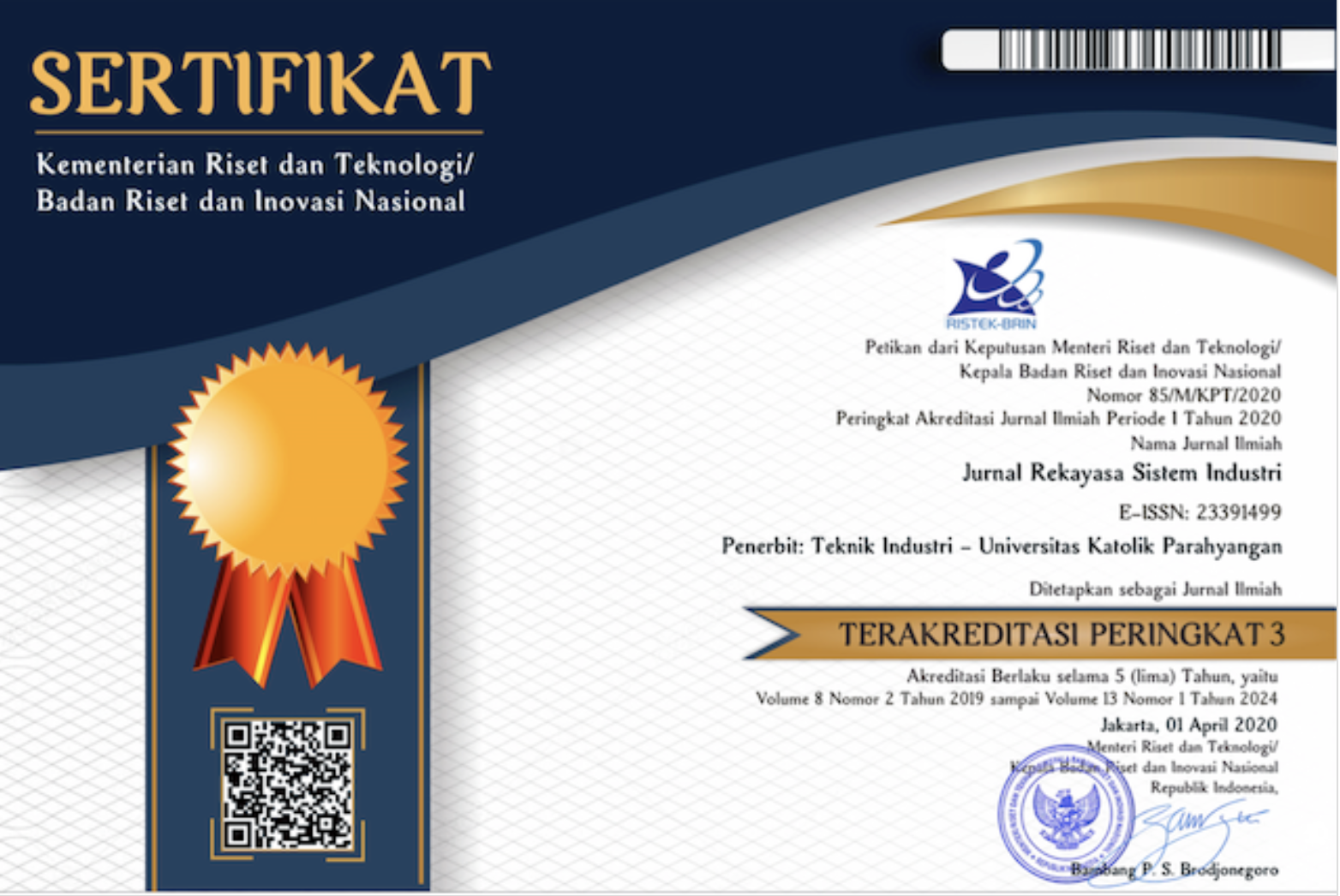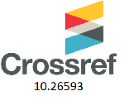A Perancangan Aplikasi E-Retail untuk Membangun User Experience Positif dalam Kegiatan Berbelanja Offline
Perancangan Aplikasi E-Retail untuk Membangun User Experience Positif
DOI:
https://doi.org/10.26593/jrsi.v11i1.5220.81-92Kata Kunci:
aplikasi, HEART framework, usability, user experience, WSDMAbstrak
Berbelanja merupakan aktivitas pokok yang harus dilakukan manusia untuk memenuhi kebutuhan hidupnya. Namun, perkembangan teknologi saat ini secara tidak langsung mempengaruhi pola berbelanja manusia, khususnya konsumen milenial yang beralih menggunakan saluran online. Hal ini merupakan tantangan dan peluang bagi para peritel toko offline yang bersaing secara langsung dengan toko online yang menawarkan kemudahan dan kecepatan. Perancangan aplikasi berbelanja offline dapat membantu konsumen melakukan kegiatan belanja offline dengan mudah dan cepat serta menawarkan pengalaman baru yang belum pernah dirasakan sebelumnya. Proses perancangan dilakukan dengan mengumpulkan tanggapan responden terkait kegiatan berbelanja offline di Yogya Department Store hingga didapatkan daftar kebutuhan pengguna. Selanjutnya, penentuan mission statement, audience modelling, conceptual design, implementation design, dan implementation dilakukan sesuai tahap perancangan WSDM. Tahap implementation design menghasilkan 3 buah konsep rancangan aplikasi, yaitu E-Store, V-Store, dan E-Shop. Berdasarkan hasil penilaian 4 orang responden, konsep desain E-Store mendapatkan perolehan nilai tertinggi sebesar 18,6 mengacu pada pemenuhan daftar kebutuhan pengguna. Konsep desain E-Store kemudian dikembangkan menjadi high-fidelity prototype dengan mengadaptasi beberapa fitur dari konsep lain dengan bantuan software Adobe XD. Evaluasi dilakukan dengan menguji tingkat usability dan user experience dari 12 orang partisipan. Partisipan diminta untuk mengerjakan task list dan memberikan penilaian dengan SUS sehingga didapatkan data kuantitatif dengan perolehan nilai sebesar 79 dan data kualitatif dari tanggapan partisipan. Sementara, pengujian user experience dilakukan dengan HEART framework dan hasil kelima metrik menunjukkan penilaian sangat baik dengan penilaian di atas 70%. Perbaikan prototipe selanjutnya dilakukan pada masing-masing poin yang mendapatkan nilai rendah ataupun mendapatkan tanggapan negatif dan saran dari partisipan.
Referensi
Armstrong, G., Kotler, P., & Opresnik, M.O. (2016). Marketing an Introduction–Global Edition (13th ed.). England: Pearson.
Badan Pusat Statistik, Sensus Penduduk 2020, Sensus Era Digital, [Online], Diakses dari: https://bandungkota.bps.go.id/news/2020/01/07/15/sensus-penduduk-2020--sensus-era-digital---.html [2020, 12 Desember].
Garnesia, I., Sana-sini Ngaku Milenial, Bagaimana Peta Milenial Indonesia?, [Online], Diakses dari: https://tirto.id/sana-sini-ngaku-milenial-bagaimana-peta-milenial-indonesia-cX5W [2018, 23 September].
Hassenzahl, M. (2008). User Experience (UX): Towards an Experiential Perspective on Product Quality. Proceedings of the 20th International Conference of the Association Francophone d'Interaction Homme-Machine on - IHM ‘08, Metz.
Kompas, Riset: Masyarakat Lebih Banyak Belanja Online Dibanding Offline, [Online], Diakses dari: https://money. kompas.com/read/2021/10/22/211000926/riset--masyarakat-lebih-banyak-belanja-online-dibanding-offline [2021, 25 Desember].
Lalwani, D. (2016). Young Consumers Online and Offline Channel Purchase Behaviour, MBA. Finland: Arcada University of Applied Sciences.
Lubis, M., Konsumen Indonesia Mulai Menyukai Belanja Online, [Online], Diakses dari: www.academia.edu/download/444352
/Purchasing_Behavior_in_Indonesia.docx [2018, 15 Agustus].
Piotrowicz, W. & Cuthbertson (2014). Introduction to The Special Issue Information Technology in Retail: Toward Omnichannel Retailing. International Journal of Electronic Commerce, 18(4), 5-16.
Rodden, K., Hutchinson, H., & Fu, X. (2010), Measuring the User Experience on a Large Scale: User-Centered Metrics for Web Applications. Proceedings of the 28th International Conference on Human Factors in Computing Systems.
Rubin, J. & Chisnell, D. (2008). Handbook of Usability: How to Plan, Design, and Conduct Effective Test. Indiana: Wiley Publishing, Inc.
SmarterHQ, Retail Marketing Strategies to Prioritize During COVID-19, [Online], Diakses dari: https://smarterhq.com/blog/ covid-retail-strategies [2021, 25 Desember]
Takashima, K., Brick-and-Mortar Retailers’ Survival Strategies Amid The COVID-19 Crisis [Online], Diakses dari: https://www.mitsui.com/mgssi/en/report/detail/__icsFiles/afieldfile/2020/07/21/2006o_takashima_e.pdf [2021, 25 Desember].
Troyer, O.D., Casteleyn, S., & Plessers, P. (2008). WSDM: Web Semantics Design Method di dalam Rossi, G., Pastor, O., Schwabe, D., & Olsina L, Web Engineering: Modelling and Implementing Web Applications, 303-351.
Verhoef, P. C., Kannan, P. K., & Inman, J. J. (2015). From Multi-Channel Retailing to Omni-Channel Retailing: Introduction to The Special Issue on Multi-Channel Retailing. Journal of Retailing, 91(2), 174-181.
Wenzl, M., Understanding Online Consumer Behaviors for a Better Customer Journey, [Online], Diakses dari: https://www.shipbob.com/blog/online-consumer-behavior/ [2021, 25 Desember].













